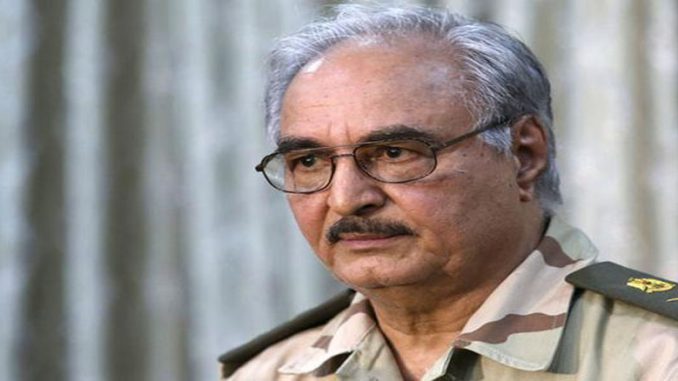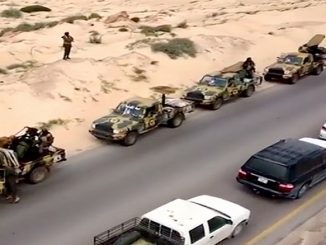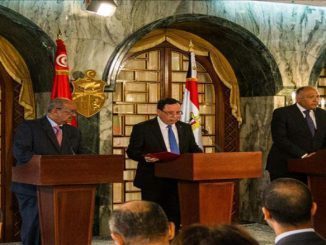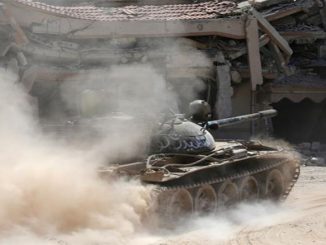
Drones from the United Arab Emirates (UAE) participated in an attack by East Libya-based forces on government troops in Gharyan city, south of Tripoli, a Libyan military commander said.
This week, forces loyal to military commander Khalifa Haftar launched an offensive on Gharyan in an attempt to wrest control of the city from forces loyal to UN-recognized Government of National Accord (GNA).
GNA forces repelled the attack and captured Col. Fawzi Buhrara, the former leader of Gharyan operations room of pro-Haftar forces.
In a video shared on Facebook by Libya February T.V., Buhrara said Emirati drones had participated in the attack.
There was no immediate comment by the UAE on the allegation.
In April, forces loyal to Haftar launched a campaign to capture Tripoli from the GNA forces.
Clashes between the two sides since then have left more than 1,000 people dead and about 5,500 wounded, according to the World Health Organization (WHO).
From the moment Khalifa Haftar launched his offensive on Tripoli in April, the Libyan commander called on air power to back his fighters on the ground.
To supplement his self-styled Libyan National Army (LNA) – a group of militias rotating around a regular army nucleus of about 25,000 men – Haftar has used about 15 aircraft and a few gunships and transport helicopters.
In the Libyan capital, the UN-backed Government of National Accord has relied on a similar number of fighter jets, and the first weeks of Haftar’s offensive saw intensive airstrikes from both sides.
The air power commanded by the warring parties may sound impressive, but they are in fact as rag-tag as the ground forces they back. Soon, the aircraft’s age became apparent as the LNA lost a Russian-made MiG-21MF and the GNA two French Mirage F1AD/EDs, according to Middle East Eye.
With no new aircraft readily available, mechanics on both sides have stayed busy attempting to keep the ageing fleets operational.
Not wanting to be left without airpower, however, Haftar and the GNA appear to have turned to another type of craft: drones.
Two weeks after the first fighting, rumours of night bombing carried out by drones were reported by civilians and GNA-affiliated militias.
In late April the first hard evidence of drone use began to emerge. Images of Blue Arrow 7 missile fragments began to circulate following raids on Wadi Rabe, al-Hira, al-Azizia, and Ain Zara.
Also known as the LJ-7, the Blue Arrow 7 is a Chinese-made anti-tank guided missile manufactured for the export market.
The Blue Arrow 7 missile is suitable for use on Wing Loong 2 unmanned aerial vehicles, and has previously and noticeably been combined in eastern Libya by the United Arab Emirates, one of Haftar’s chief backers.
Since June 2016 the UAE has kept a fleet of Chinese-made Wing Loong crafts in the al-Khadim airbase in eastern al-Marj province, alongside other attack aircraft.
The small Emirati fleet was engaged in airstrike and reconnaissance missions in support of the LNA as Haftar’s forces fought militants in Benghazi in 2016, and in Derna in 2018.
Libya has remained beset by turmoil since 2011, when long-time ruler Muammar Gaddafi was ousted and killed in a bloody NATO-backed uprising after four decades in power.
The oil-rich country has since seen the emergence of two rival seats of power: one in eastern Libya, with which Haftar is affiliated, and the Tripoli-based GNA, which enjoys UN recognition.



